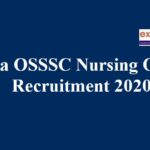1. Mostly the advertisements belong to which of the
following categories?
following categories?
(b) Comparison
(c) Informative
(d) Persuasive
2. Sales plan involves
(a) Price of Product and Services
(b) Sales Area
(c) Determination of
Sales Methods
Sales Methods
(d) All of these
3. Surgery is an example of
(a) declining demand
(b) latent demand
(c) negative demand
(d) unwholesome demand
4. Which one is larger in size?
(a) Served market share
(b) Overall market share
(c) Both of the above
are equal
are equal
(d) None of these
5. Overall market share is described with four components.
Which of the following does the statement percentage of the customers who buy
from the company” correspond to?
Which of the following does the statement percentage of the customers who buy
from the company” correspond to?
(a) Customer loyalty
(b) Customer penetration
(c) Customer
selectivity
selectivity
(d) Price selectivity
6. Which of the following does the definition
“Consumers who have interest, income and access to a particular market
offering” define?
“Consumers who have interest, income and access to a particular market
offering” define?
(a) Available market
(b) Potential market
(c) Target market
(d) Penetrated market
7. One of the four elements of the MIS is used to collect
information, Internal -ad-hoc data refers to which of the following?
information, Internal -ad-hoc data refers to which of the following?
(a) Descriptive details help marketers to carry out analysis
by disaggregating the data of sales for e.g., discounts and promotional costs
by disaggregating the data of sales for e.g., discounts and promotional costs
(b) Using the data of customer transactions and associated
costs for specific purposes for e.g., change in sales after change in price
costs for specific purposes for e.g., change in sales after change in price
(c) Information on
environmental forces such as social, legal, economic and technological
environmental forces such as social, legal, economic and technological
(d) Marketing research carried out to plan a marketing mix
(external ad-hoc data and external continuous data)
(external ad-hoc data and external continuous data)
8. What is the source of information, though present but not
developed for the problem in consideration called?
developed for the problem in consideration called?
(a) Primary data
(b) Tertiary data
(c) Secondary data
(d) Quaternary data
9. In which of the following does a person select, organize
and interpret sensory stimulation to form a meaning?
and interpret sensory stimulation to form a meaning?
(a) Attitude
(b) Learning
(c) Perception
(d) Motivation
10. According to which of the following aspects of
perception, a customer comes across and screens a particular stimulus generated
for a market offering?
perception, a customer comes across and screens a particular stimulus generated
for a market offering?
(a) Selective attention
(b) Selective retention
(c) Classical conditioning
(d) Selective distortion
11. In which case does the consumer develop thoughts for a
product or brand based on one or more choices criteria?
product or brand based on one or more choices criteria?
(a) Motivation
(b) Personality
(c) Lifestyle
(d) Belief
12. The difference between the prospective customer
evaluation of all benefits and all the costs of an offering the percieved
alternatives is termed as
evaluation of all benefits and all the costs of an offering the percieved
alternatives is termed as
(a) total customer value
(b) total customer cost
(c) customer
perceived value
perceived value
(d) none of the above
13. Which of the following drivers of customer equity
relates to objective assessment of the market offering utility, based on
perception relative to the costs incurred?
relates to objective assessment of the market offering utility, based on
perception relative to the costs incurred?
(a) Brand equity
(b) Equity value
(c) Relationship equity
(d) All of the above
14. Which target of marketing strategy did Starbucks follow?
(a) Multi-segment targeting
(b) Undifferentiated targeting
(c) Concentrated
targeting
targeting
(d) None of the above
15. Out of the following broad groups of segmentation
criteria, which of the following subgroups does not fall under psychographic
segmentation?
criteria, which of the following subgroups does not fall under psychographic
segmentation?
(a) Personality
(b) Purchase behavior
(c) Lifestyle
(d) None of the above
16. In case of industrial market segmentation, which of the
following subgroup segmentation is not a part of micro segmentation?
following subgroup segmentation is not a part of micro segmentation?
(a) Organisational size
(b) Decision making unit
(c) Choice criteria
(d) Buy class
17. On comparing a business market and a consumer market
which of the following holds true?
which of the following holds true?
(a) Business market deals with a large number of buyers.
(b) Suppliers customise their offerings to individual
business customer needs.
business customer needs.
(c) Demand for
business goods is not derived from the demand for the consumer goods.
business goods is not derived from the demand for the consumer goods.
(d) The total demand for business goods is not inelastic in
nature.
nature.
18. In case of supplier selection, which of the following
methods states that the customer ranks its preference for alternative market
offerings or concepts and value is placed on each attribute?
methods states that the customer ranks its preference for alternative market
offerings or concepts and value is placed on each attribute?
(a) Compositional approach
(b) Benchmarks
(c) Conjoint analysis
(d) Importance ratings
19. In which of the following buyer supplier relationships
is there a low level of trust, co-operation and interaction?
is there a low level of trust, co-operation and interaction?
(a) Co-operative systems
(b) Contracted transaction
(c) Customer is king
(d) Collaborative
20. Which of the following is also known as natural market
segment?
segment?
(a) Clustered preferences
(b) Diffused preferences
(c) Homogenous
preferences
preferences
(d) None of the above
21. A cohort group is defined under which category of
demographic segment?
demographic segment?
(a) Income
(b) Age and life cycle
(c) Social group
(d) Generation
22.’Time-Pass Biscuits” is an example of which of the
following behavioural segmentations?
following behavioural segmentations?
(a) Occasions
(b) Usage rate
(c) Benefits
(d) User status
23. Users of a brand are divided into four groups according
to their strength of commitment. Which of the following groups is defined
as”Consumers who are uncommitted to the brand and can switch”?
to their strength of commitment. Which of the following groups is defined
as”Consumers who are uncommitted to the brand and can switch”?
(a) Convertible
(b) Average
(c) Shallow
(d) Entrenched
24. The supplier’s bargaining power is high in which case?
(a) When suppliers cannot integrate downstream
(b) When supplier switching cost is low
(c) When supplied
product is not an important input
product is not an important input
(d) When suppliers are concentrated
25. Heublein’s brand Smirnoff was attacked by a low priced
competitor Wolfschmidt. In reply Heublein actually raised the price and put the
increased revenue into advertising. Which type of defence strategy is this?
competitor Wolfschmidt. In reply Heublein actually raised the price and put the
increased revenue into advertising. Which type of defence strategy is this?
(a) Pre emptive defence
(b) Counter offensive defence
(c) Flank defence
(d) Mobile defence
Note: These are Professional Knowledge Quiz for IBPS Specialist Marketing Officer Exam.
Important For: IBPS Marketing Officer Professional Knowledge, Insurance Marketing Officer
This post was last modified on November 27, 2017 9:03 am





